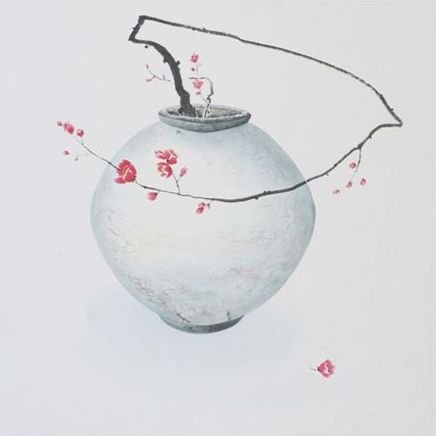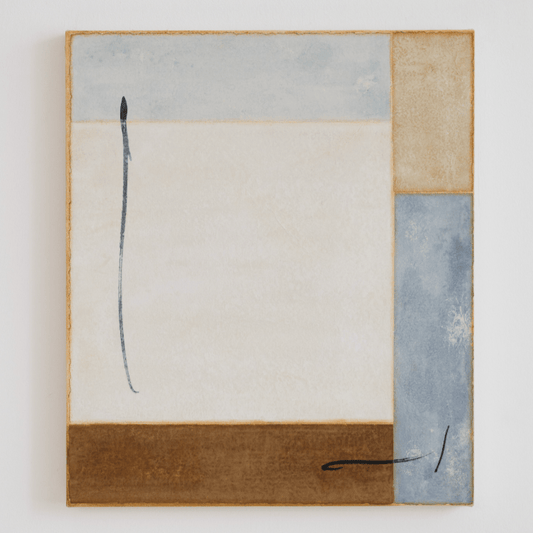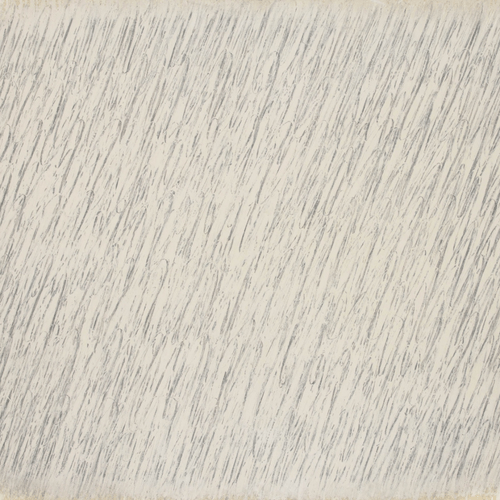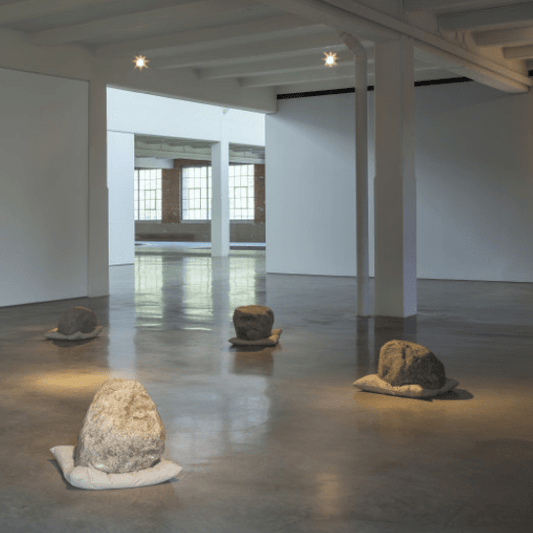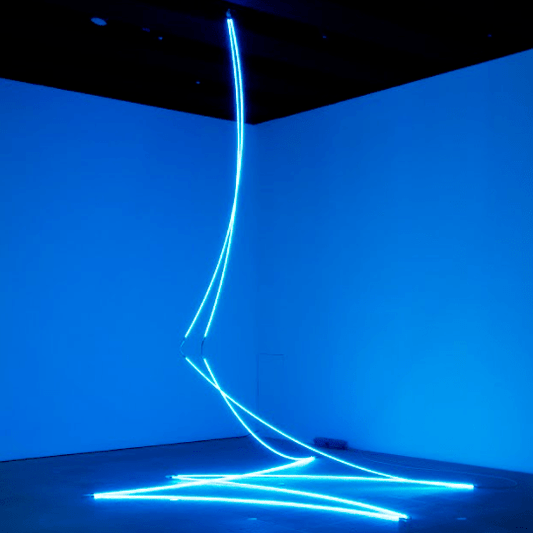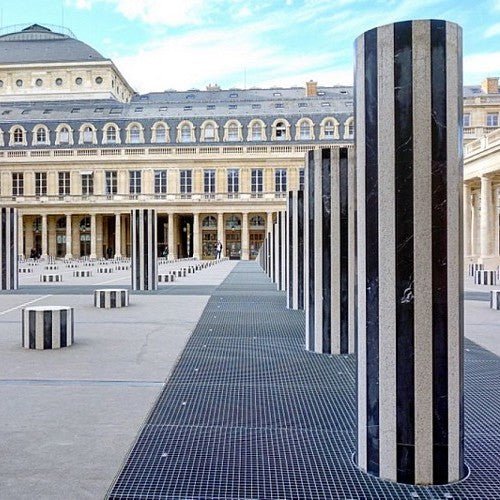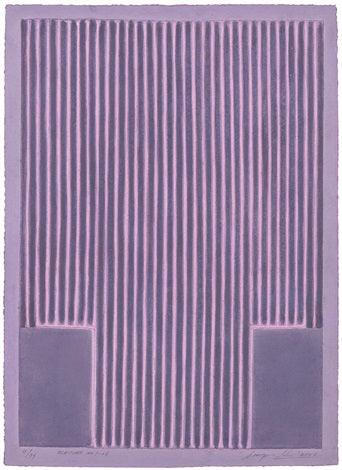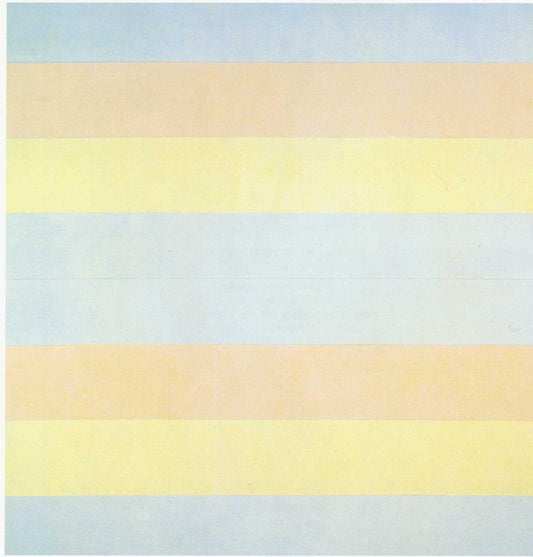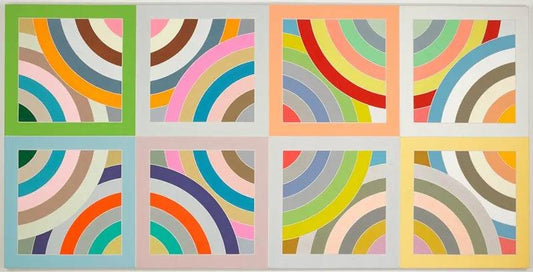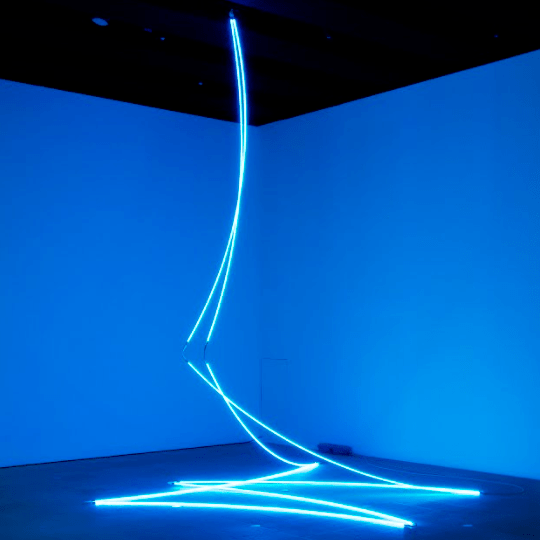
François Morellet: The Precision of Playfulness in Art and Minimalism
François Morellet (1926–2016) was a pivotal figure in the evolution of French minimalism and conceptual art, known for his rigorous yet playful exploration of geometric forms, light, and space. His art is marked by an elegant balance between precision and whimsy, combining mathematical structures with an element of chance and humor. Morellet’s works invite viewers to engage with the complex interplay of order and randomness, making him a significant contributor to the narrative of minimalism in France and beyond.
Who Was François Morellet?
Born in Cholet, France, Morellet initially pursued a conventional career path, managing his family's toy factory, while practicing art on the side. He was largely self-taught, but his fascination with geometry, patterns, and the principles of abstraction quickly drew him into the avant-garde circles of post-war Europe. Morellet was a founding member of the Groupe de Recherche d’Art Visuel (GRAV), a collective of artists who sought to demystify art and make it more interactive and accessible.
Morellet’s work spans a variety of mediums, including painting, sculpture, and installation. He often employed geometric forms, grids, and mathematical systems to construct his pieces, while also incorporating light and movement to create dynamic, immersive environments. His use of neon lights in particular became a hallmark of his practice, transforming spaces and challenging traditional notions of art and sculpture.
French Minimalism: Context and Evolution
French minimalism, distinct from its American counterpart, is characterized by its focus on the philosophical and contextual aspects of art rather than purely on form and material. While American minimalism often emphasizes the autonomy of the art object, French minimalists like Morellet, Daniel Buren, and others were more interested in how art interacts with its environment and the viewer.
Morellet, in particular, embraced a kind of “systematic minimalism” that sought to remove subjective expression from the creative process. He employed mathematical principles, such as the Fibonacci sequence or random number generators, to dictate the structure of his works, allowing chance to play a significant role in their final form. This approach aligns with the French minimalist tendency to question traditional boundaries between art and life, object and viewer.
"Lamentable," 2006
One of Morellet’s most celebrated works is “Lamentable”, created in 2006. This piece, part of a series of neon light installations, exemplifies his use of humor, light, and geometry to engage the viewer in a playful yet thoughtful dialogue. "Lamentable" consists of a large, flexible neon tube bent into an irregular, seemingly haphazard shape that defies the rigid, precise forms typically associated with minimalism.
The Concept Behind the Work
"Lamentable" is a clever wordplay in French, referring to something pitiful or pathetic, which in this context humorously describes the "collapsed" form of the neon tube. The work stands in stark contrast to Morellet’s earlier, more austere geometric pieces. Here, the artist deliberately subverts expectations by presenting a minimalist form that appears to have "failed" or "fallen apart," challenging the viewer's perception of order, precision, and artistic intent.
This piece is a testament to Morellet's philosophy that minimalism need not be solemn or dogmatic. By injecting humor and a sense of play into the work, he invites the viewer to reconsider the often rigid and severe connotations of minimalism. "Lamentable" becomes a reflection on the fragility of form and the limitations of rigid systems, suggesting that even within the most structured approaches, there is room for error, failure, and, ultimately, human expression.
Impact and Interpretation
When "Lamentable" was first exhibited, it captured the attention of both critics and the public for its witty, almost self-deprecating approach to minimalism. In a movement often associated with cold precision and detachment, Morellet's work stands out for its warmth and accessibility. The piece invites viewers to laugh and ponder the arbitrary nature of rules and systems, both in art and life.
Morellet’s use of neon lights, which he began in the 1960s, added a new dimension to his minimalist practice. Light, with its immaterial quality, allowed him to explore the intersection between object and environment, creating spaces that are as much about perception as they are about form. In "Lamentable," the seemingly casual draping of the neon tube contrasts sharply with its inherent precision as a medium, highlighting the tension between chaos and control.
Morellet and the Minimalist Ethos
François Morellet’s work embodies the spirit of French minimalism through its emphasis on context, interaction, and conceptual rigor. His systematic approach, combined with a willingness to embrace chance and humor, sets him apart from his contemporaries. While artists like Donald Judd and Carl Andre focused on the materiality and autonomy of the art object, Morellet’s practice was rooted in the belief that art should be both rigorous and engaging, inviting viewers to question their own perceptions and assumptions.
Morellet’s interest in systems and randomness also aligns with the minimalist preoccupation with stripping art down to its essentials. However, he diverged from the minimalist orthodoxy by incorporating a sense of playfulness and irony, challenging the notion that minimalism had to be austere and impersonal. His work reflects a uniquely French approach to minimalism, one that is more relational and open to the unpredictable nature of human experience.
Legacy and Influence
François Morellet's influence extends across multiple generations of artists, particularly those interested in the intersections of art, mathematics, and science. His pioneering use of neon lights has inspired numerous artists working in light and installation art, including figures like Dan Flavin and James Turrell. Morellet’s insistence on the role of humor and chance in art has also resonated with conceptual artists who seek to challenge the seriousness and elitism often associated with the art world.
Moreover, his work has had a lasting impact on the perception of minimalism itself, demonstrating that a minimalist approach can be both intellectually rigorous and delightfully irreverent. Morellet’s legacy is one of openness and curiosity, an artist who used the precision of geometric forms to explore the complexity and unpredictability of life.
Conclusion
François Morellet’s art is a compelling exploration of the boundaries between order and chaos, form and formlessness, seriousness and play. His works like “Lamentable” challenge us to reconsider the nature of minimalism and invite us to find joy in the unexpected. By integrating humor, light, and chance into his rigorous systems, Morellet reminds us that art is not just about strict adherence to rules but about engaging with the world in all its complexity and contradiction.
In the broader context of French minimalism, Morellet’s contribution is invaluable. He exemplifies a movement that, while minimal in form, is maximal in its engagement with philosophy, perception, and the lived experience. His art remains a testament to the enduring power of simplicity to reveal the richness of our world and the limitless possibilities of human creativity.




